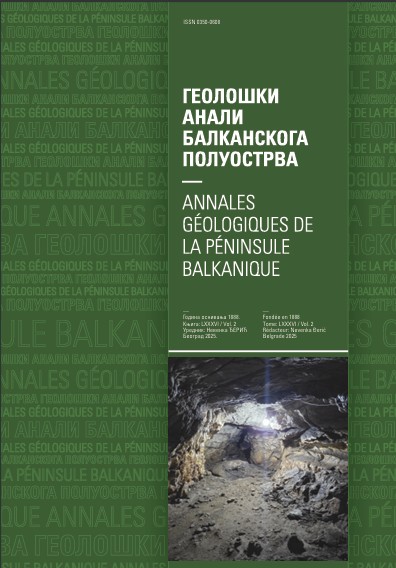The occurrence and evolution of arsenic in aquifers of the Avala volcanic complex (outskirts of Belgrade, Serbia)
Abstract
Avala Mountain is accommodated 15 km southward from the city of Belgrade and extends over the area of about 10 km2. Avala Mountain is a cultural and historical heritage of Belgrade qualified by the Law on Environmental protection. The area is abundant with water springs that have been exploited by tourist facilities and local population. By analyzing groundwater sampled from several springs and wells located in a vicinity of the Avala magmatic entity here we study the occurrence, concentration and origin of arsenic pollutant. The investigated springs are accommodated within the faulted complex of Mesozoic carbonate and clastic sediments, serpentinite, further intruded by the Tertiary magmatic rocks. By using the concentrations of the major and minor components(e.g. Cr, Ni, Fe, Mn) in groundwater, the relationship between groundwater and local lithostratigraphic units is outlined. Chemical analysis of the investigated waters shows that arsenic concentration in groundwater of the investigated area is in range from 3.0 to 102.0 μg/l. Arsenic concentrations over the maximum allowed value in drinking water (10 μg/l) are detected in more than 55% cases. The occurrence of arsenic in groundwater can be attributed to local igneous rocks, i.e. to the process of oxidation of sulphide minerals with As (major or minor presence) – primarily arsenopyrite or pyrite. Groundwater with higher concentration of arsenic (above10 μg/l) is exploited as drinking water used by tourists and by local population. Along term use of the water with high concentration of arsenic impose a major health risk.
Copyright (c) 2020 Geološki anali Balkanskoga poluostrva

This work is licensed under a Creative Commons Attribution 4.0 International License.










